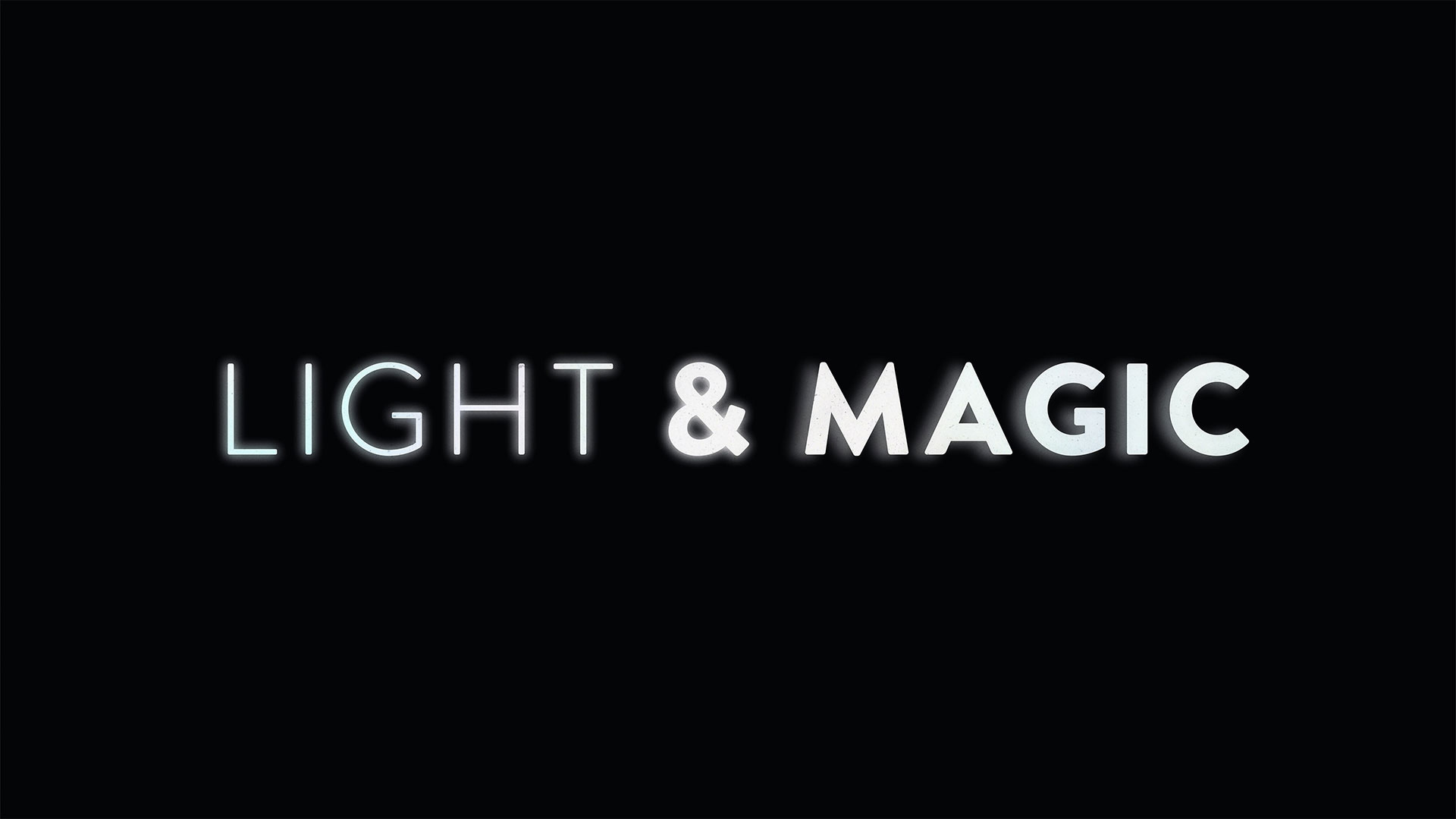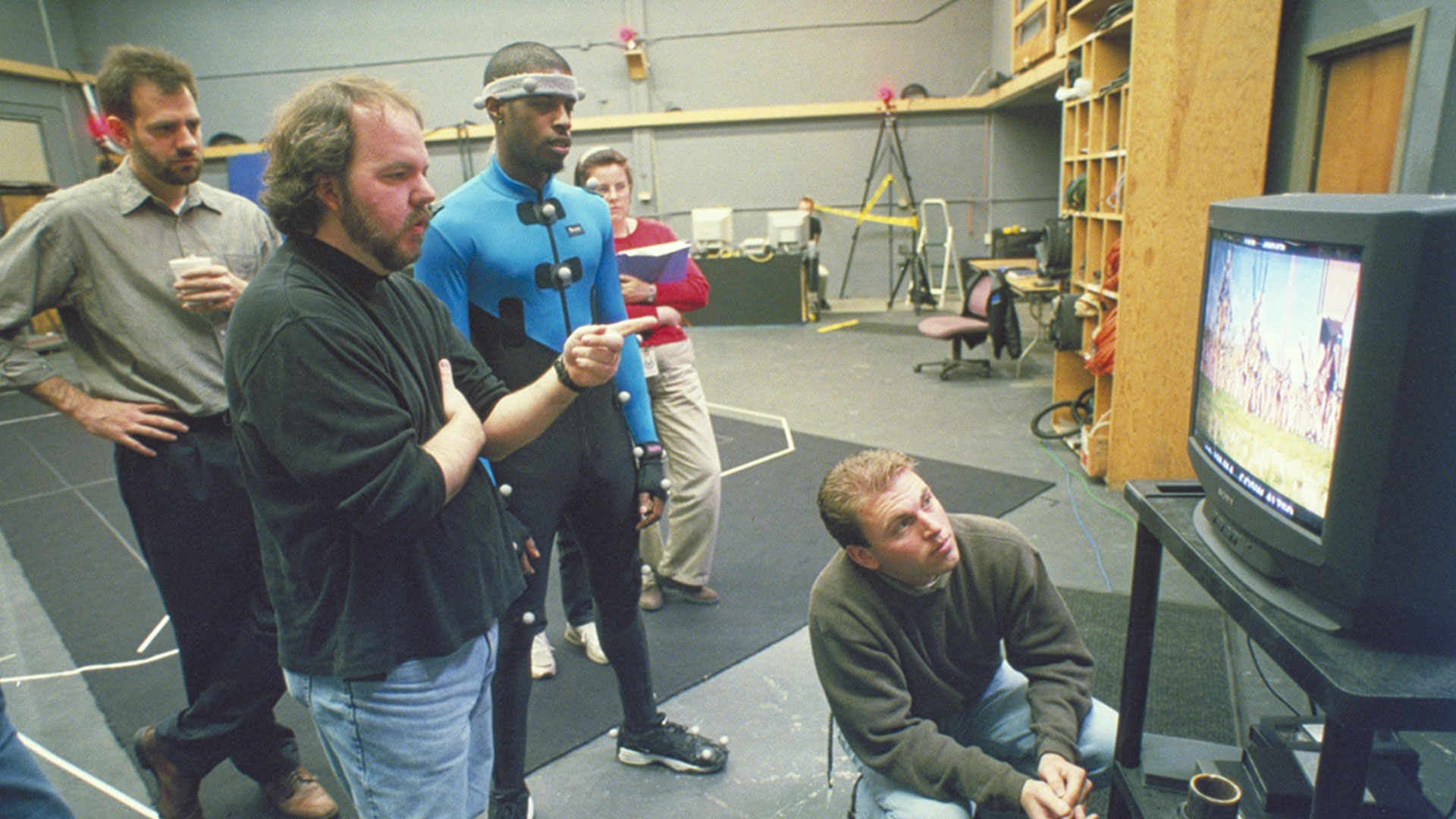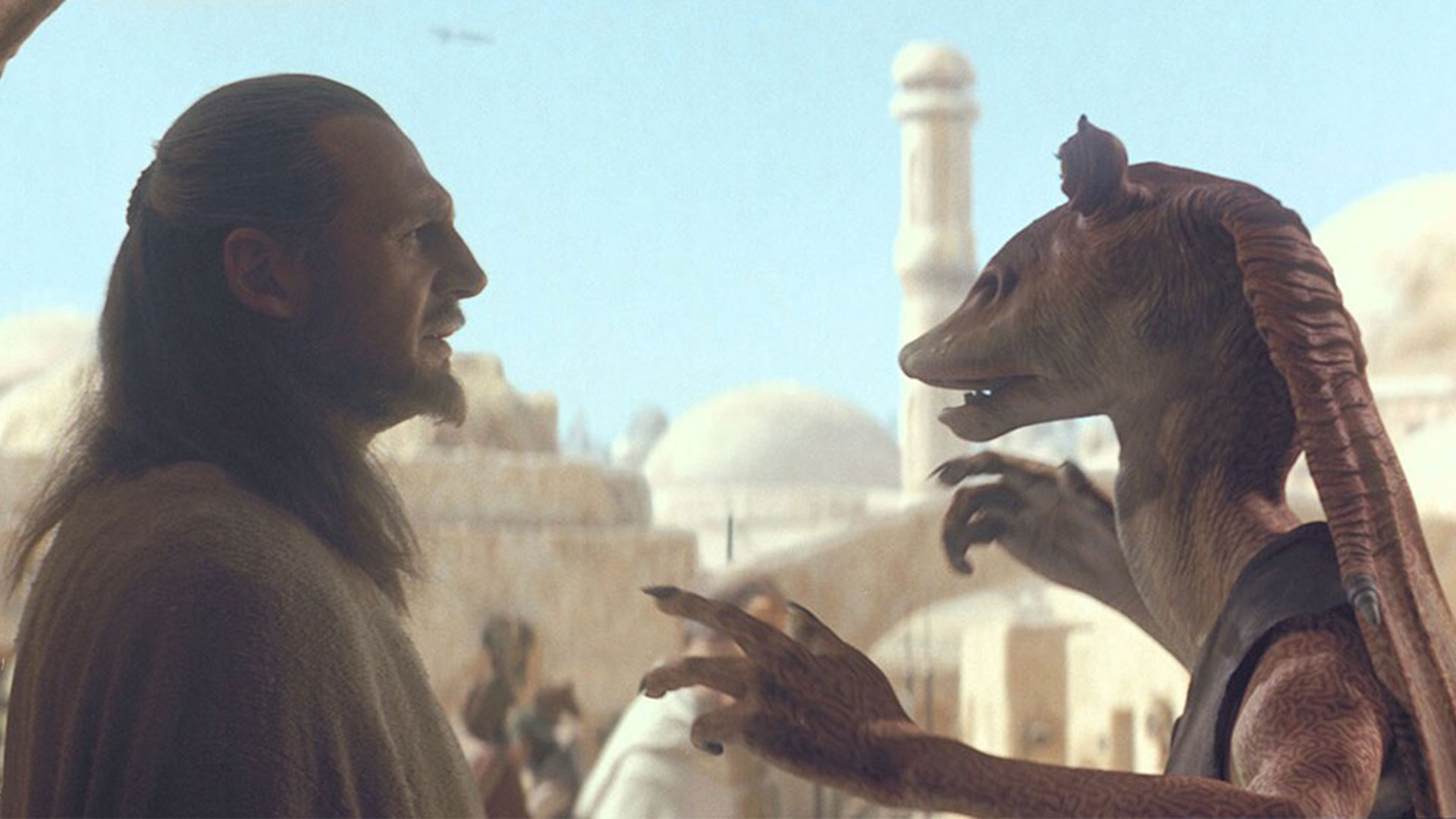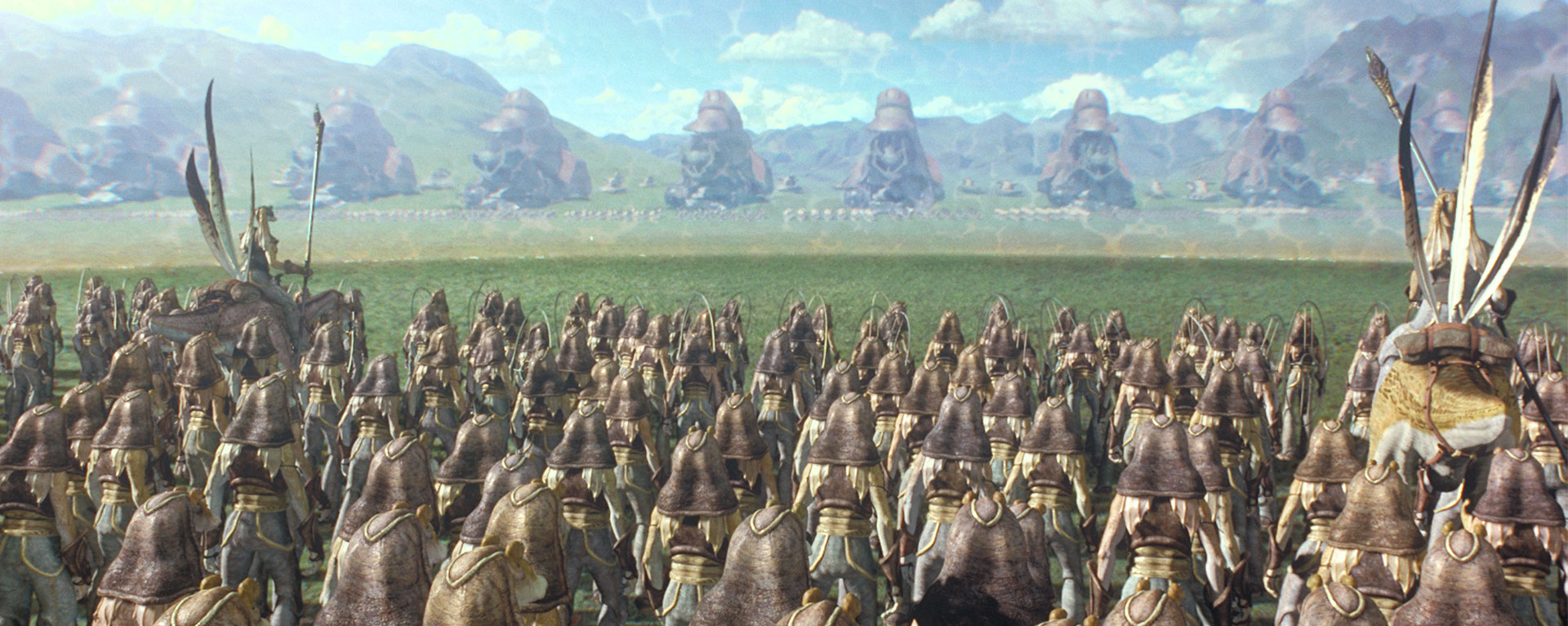Joe Johnston, Ahmed Best, and ILM Talk Light & Magic Season 2
The documentary series about Industrial Light & Magic from Lucasfilm and Imagine Entertainment returns April 18 on Disney+.
“Jar Jar walks so Gollum can run and the Na’vi could fly.” That’s how original Jar Jar Binks actor Ahmed Best describes the importance of his character in the advent of digital visual effects.
Best recently joined director Joe Johnston and a host of creative leadership from Industrial Light & Magic (ILM) to discuss the upcoming Season 2 of Lucasfilm and Imagine Entertainment’s documentary series Light & Magic, which returns to Disney+ on April 18, 2025.

“We start this season with Jurassic Park because it is recognized as the moment in the history of film when everything changed, when digital technology became viable as a visual effects tool,” notes Joe Johnston, himself an original member of ILM’s crew beginning on Star Wars: A New Hope (1977). “One of the important stories that I wanted to tell with Season 2 was the effect that George Lucas has had on digital technology and just film itself, all his influences, the things he’s contributed, the things he’s come up with and invented and inspired. That’s one of the focuses of Season 2.”
As the first all-digital main character in a feature film, Jar Jar Binks’ appearance in Star Wars: The Phantom Menace (1999) proved a watershed moment. Within a decade, other visual effects studios followed in ILM’s footsteps with characters like Gollum in The Lord of the Rings trilogy (2001-03) and the Na’vi in Avatar (2009). To realize Jar Jar on screen, Best collaborated directly with the artists at ILM to pioneer new performance capture technology whereby the actor’s movements could inform those of his digital counterpart.
“What Joe captured so wonderfully [in Light & Magic], and I was just thinking about this…because I just directed a video game that came out today which was all performance capture,” Best explains. “I was thinking about what performance capture directing is, and how we really created that during Phantom Menace. What is really special about this documentary is that what you see are two very important things…being in service of the story and having respect for each one of us and what we do, and how we do it. That comes from the top. What you see in this documentary is George giving us the respect to be the best we can be within his constraints, all of us realizing that we have to rise to that occasion because our job is to be in service to this story. I think this documentary captures that beautifully.”
All of this and more is explored in Light & Magic Season 2, which covers over a decade of ILM’s 50-year history. For Johnston, telling the story began with assembling a crew to help him sift through thousands of hours of behind-the-scenes archival footage. “Fortunately, ILM instituted a policy years ago where they documented all this stuff, the meetings…the people working on the projects,” the director says. “It’s been really helpful to us because there’s so much to go through. We can really pick and choose the moments to incorporate into the documentary.”
Rob Coleman, animation director on the Star Wars prequel trilogy and today ILM Sydney’s creative director, describes Light & Magic Season 2 as a personal time capsule or time machine. “There’s all the footage of me in my 30s, which is kind of surreal to see,” he notes with a smile. “Of course, I remember being followed around by a camera crew, and some of that footage showed up in the DVD extras…but to see it all put together under Joe’s direction was really surreal…. I feel so lucky to have had that time in my life now captured and the world can see it.”
Having worked alongside Coleman as a visual effects supervisor on the prequels, ILM’s executive creative director John Knoll comments that “I’ve never worked on anything that was as well documented as those films were. The cameras were there capturing everything, partly because I think George wanted to make sure that things were being recorded because you never knew [in] what meeting something really significant might happen.” As one of ILM’s creative leaders on The Phantom Menace, Knoll was often responsible for reassuring his colleagues that the company could pull off what was then the biggest visual effects project ever undertaken.

Though not directly involved with The Phantom Menace, Janet Lewin was a member of ILM’s production staff all throughout the period. Today she’s Lucasfilm’s senior vice president for visual effects and ILM’s general manager. “I loved reliving this transformative time in our history,” she says. “The way Joe put together this story using the archival footage to really give you that candid sense of what was happening. You can almost read the minds of people in the room. It captured a moment in time that really changed the industry.”
For Doug Chiang, Light & Magic Season 2 gave him the chance to reflect on his years as art director on The Phantom Menace and Star Wars: Attack of the Clones (2002). “It’s funny because, when we were going through it, you kind of didn’t think about that,” says Chiang, now Lucasfilm’s senior vice president and executive design director. “You’re just busy trying to innovate and create and…fulfilling George’s vision. I never really stopped to look back. When Joe put this together, it was terrific, it was surreal in a sense of, ‘Wow, that was a really special moment…. I’m very grateful to be part of it.’”
George Lucas’ vision was often all the ILM crew had to go on when they were innovating new visual effects techniques. “George is famous for saying, ‘You guys will figure it out,’” Coleman adds. “We had a production meeting every Wednesday [on The Phantom Menace] with all of the visual effects supervisors, producers, and the head of production, and there was one agenda item every week: can we get the movie done? And for months, if not a year, the answer was no we cannot get the movie done even though we were making the movie.
“There’s a line in the script that’s something like, ‘The Gungan army marches out to war,’” Coleman goes on to say. “We had no crowd system. I could load maybe 10 characters into my software to animate it. There’s no way I could do hundreds or thousands. We reached out to the R&D team and they were feverishly writing this stuff, but time was ticking. I’m getting goosebumps thinking about it right now, which is [that] there was a reality in my head that we weren’t going to be able to deliver the Gungan army. The thing about ILM even to this day is that it’s a company made up of really smart people who sit together and say, ‘How are we going to figure this out?’ It’s about innovation but it’s also about what Ahmed was talking about, which is respect and honoring and knowing that we’re all better because of the people we are with, and that’s in our DNA.”
For everyone involved, being pioneers also meant confronting naysayers and skeptics. Jar Jar Binks, in particular, became a subject of criticism among some press and audience members back in 1999. Light & Magic takes a first-person view of what it was like for the artists to experience such an emotional rollercoaster. Best is keen to point out that ILM and Lucasfilm’s innovative work was part of a greater seachange taking place in the film industry at the end of the 20th century. “There was…this idea that digital characters were going to take away from real, live-action characters,” the actor says.
“When someone like George Lucas, who is a futurist…who knows that we have to move forward in these ways, when that person comes in and pioneers…there’s going to be pushback,” Best continues. “Jar Jar was a perfect lightning rod for that. What George said to me and Rob…was that 20 years from now, it’s going to be a different story. He said it to me at the time. It was hard to deal with at the time, but looking back now, he was absolutely right. It’s a completely different story now.”

Light & Magic Season 2’s story gives viewers a direct view into the emotions of these artists and the important challenges they faced, Lewin adds. “It captures the vulnerability of making this project, pouring your heart and soul into it…that [each person] told so well, the imposter syndrome and the daunting task ahead…to do the most visual effects shots that had ever been done. For Ahmed to embody the performance of Jar Jar and to talk about how that was so innovative, so groundbreaking, and didn’t have the immediate appreciation that it [has] now. That vulnerability and honesty…was an incredible theme that Joe told so well.”
Light & Magic Season 2 premieres on Disney+ Friday, April 18, 2025. And don’t miss the panel taking place the same day at Star Wars Celebration Japan, which will also be streamed right here on StarWars.com.
—
Lucas O. Seastrom is a contributing writer and historian for Lucasfilm.

